Best Bike Pumps 2025: our most trusted and effective mini and floor pumps - reviewed
Make dealing with flats on a ride and tyre fitting at home a breeze using one of the best mini or track pumps
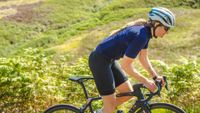
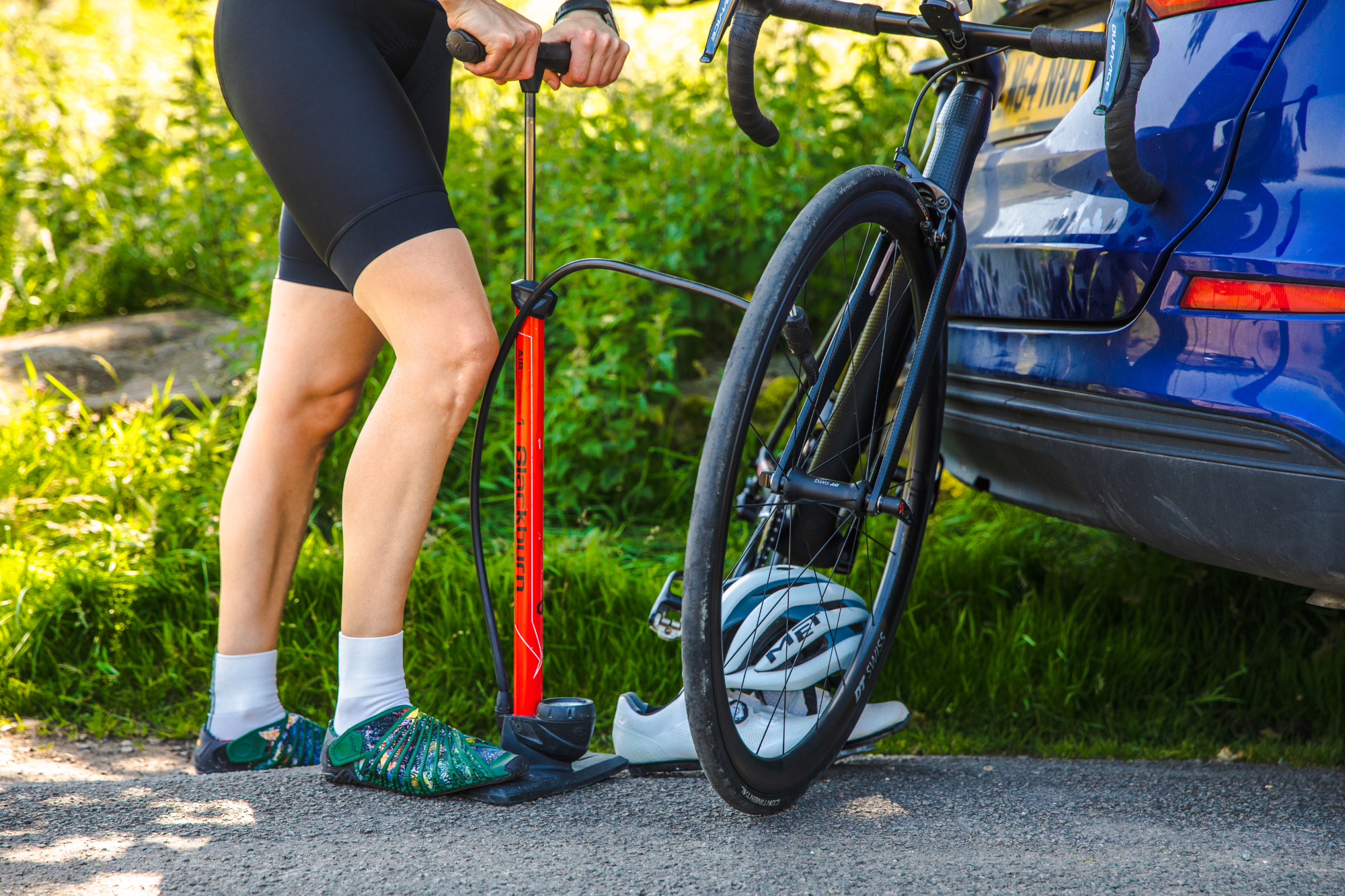
Your bike's only contact with the ground is a relatively small amount of tyre, so it's vital to ensure that it is inflated to the correct pressure for every ride. Owning one of the best bike pumps will make tyre inflation much easier and quicker.
There are now three main styles of pumps available for cyclists: hand or mini pumps, which you can carry with you on a ride in case of a puncture or loss of pressure; floor pumps (also known as track pumps), which you can have at home when you require quick inflation, setting up tubeless tyres and offering minimal effort in general. Additionally, there are the best electric bike pumps, designed to replace CO2 inflators; they are also quickly replacing most of our mini pumps to provide a more reliable, sustainable alternative and are completely effortless.
To make it easier, I have divided this guide into two categories: one for the best mini bike pumps and the other for the best bike floor pumps. Having tested dozens of pumps, we feature only the best and top-rated pumps in this guide, with top honours going to the Topeak Microrocket AL and the Specialized Air Tool Comp for their efficiency and ease of use.
In an ideal world, every cyclist would own both a mini pump and a floor pump; however, it very much depends on your tyre setup. Are you using tubes or going tubeless? Are you handling this yourself, or are you merely keeping them topped up? For assistance with choosing the best bike pump for you, please visit our 'how to choose' section at the bottom of this guide.
The Quick List
Best mini bike pumps
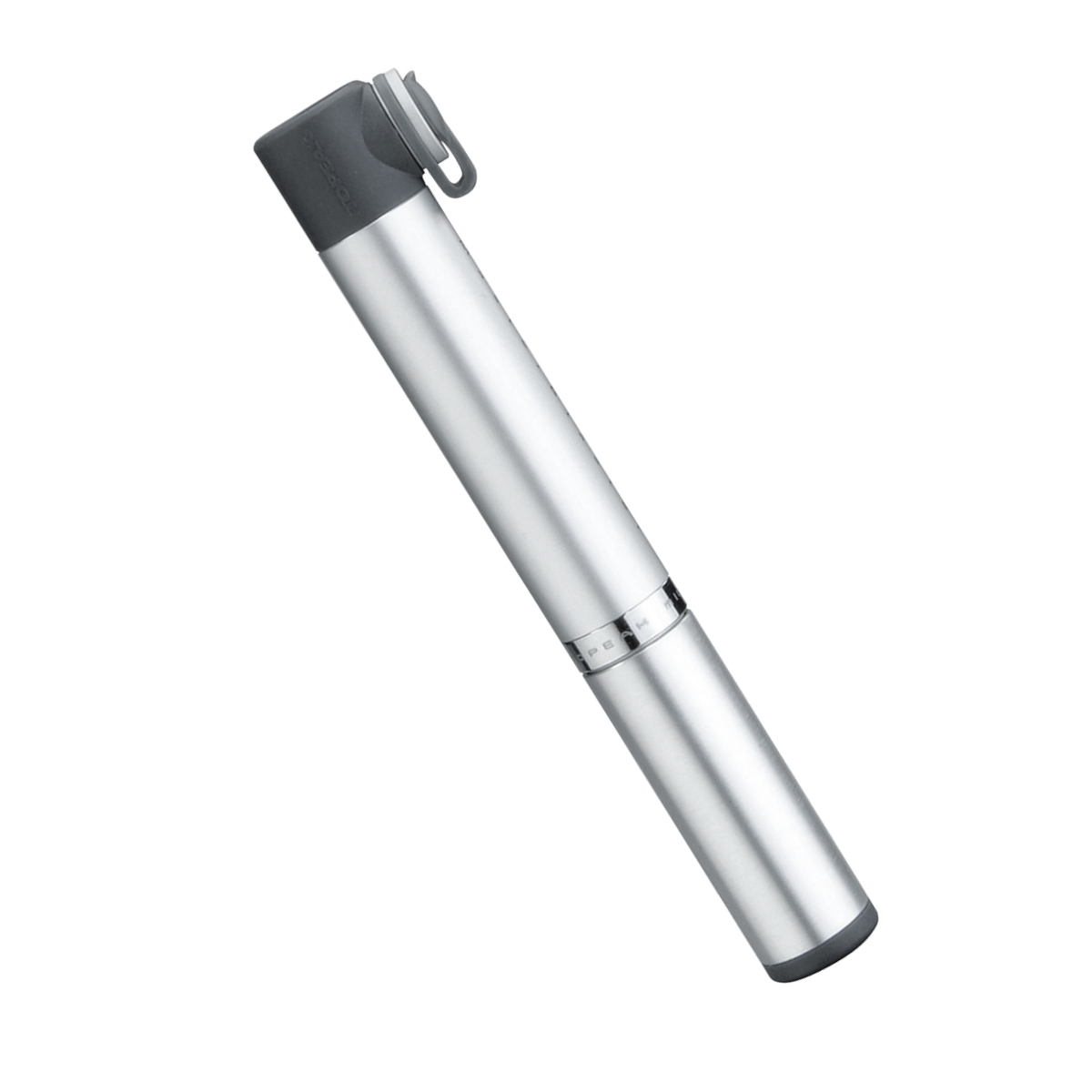
At just 160mm long and 65g, it might even be compact enough to fit in your saddlebag. Despite its size, it's efficient and comfortable to use.
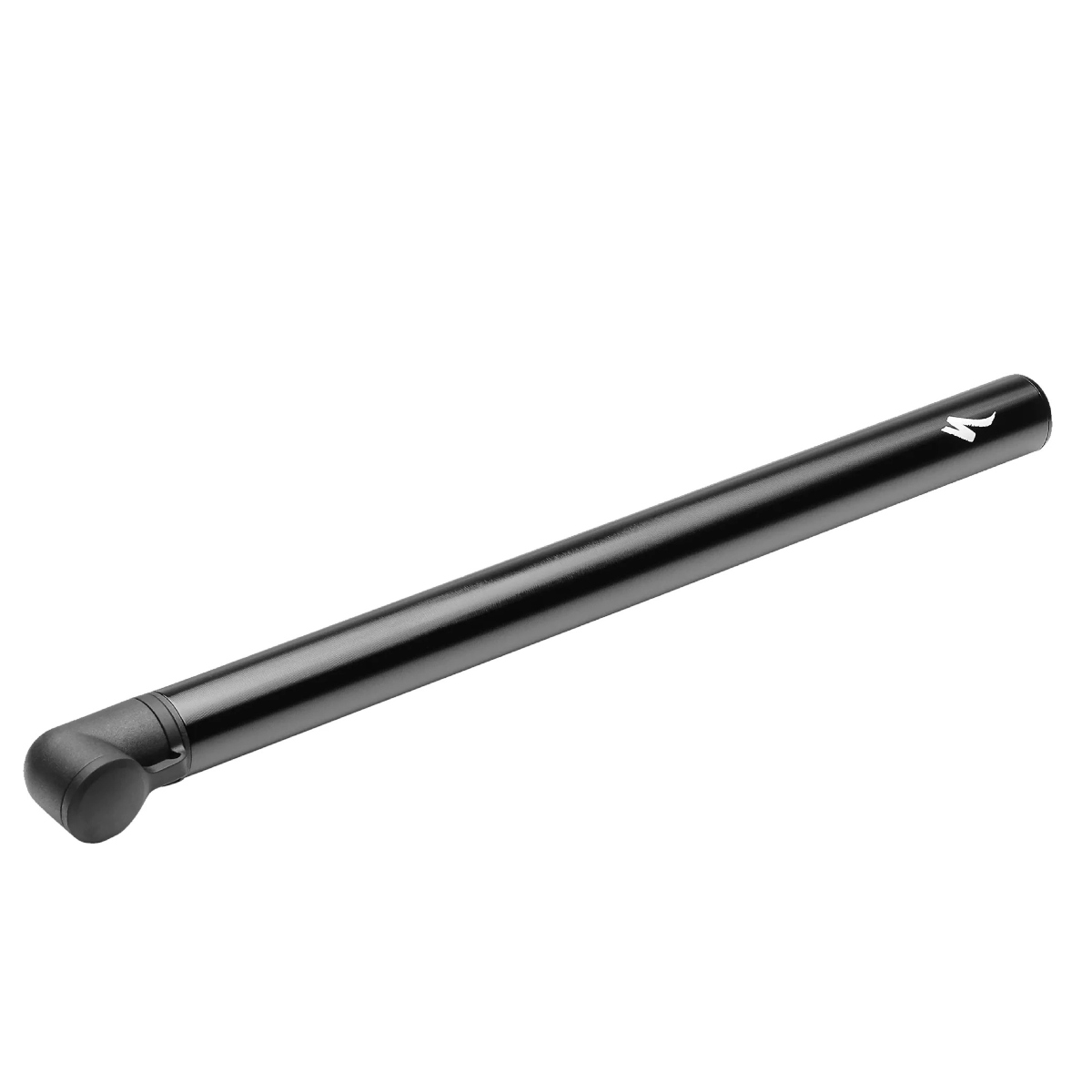
Delivers plenty of volume per stroke. Lightweight, but too long to carry in your pocket, so you'll need to use the frame mount.
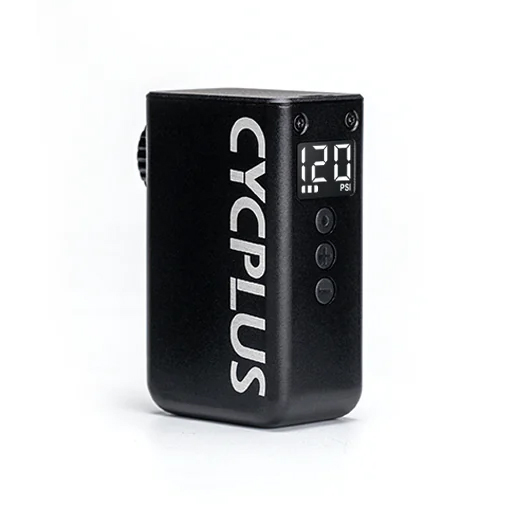
Electric pumps are taking over, and the AS2 Pro is leading the charge with its speed, precision, performance and convenience.
Best bike floor pumps
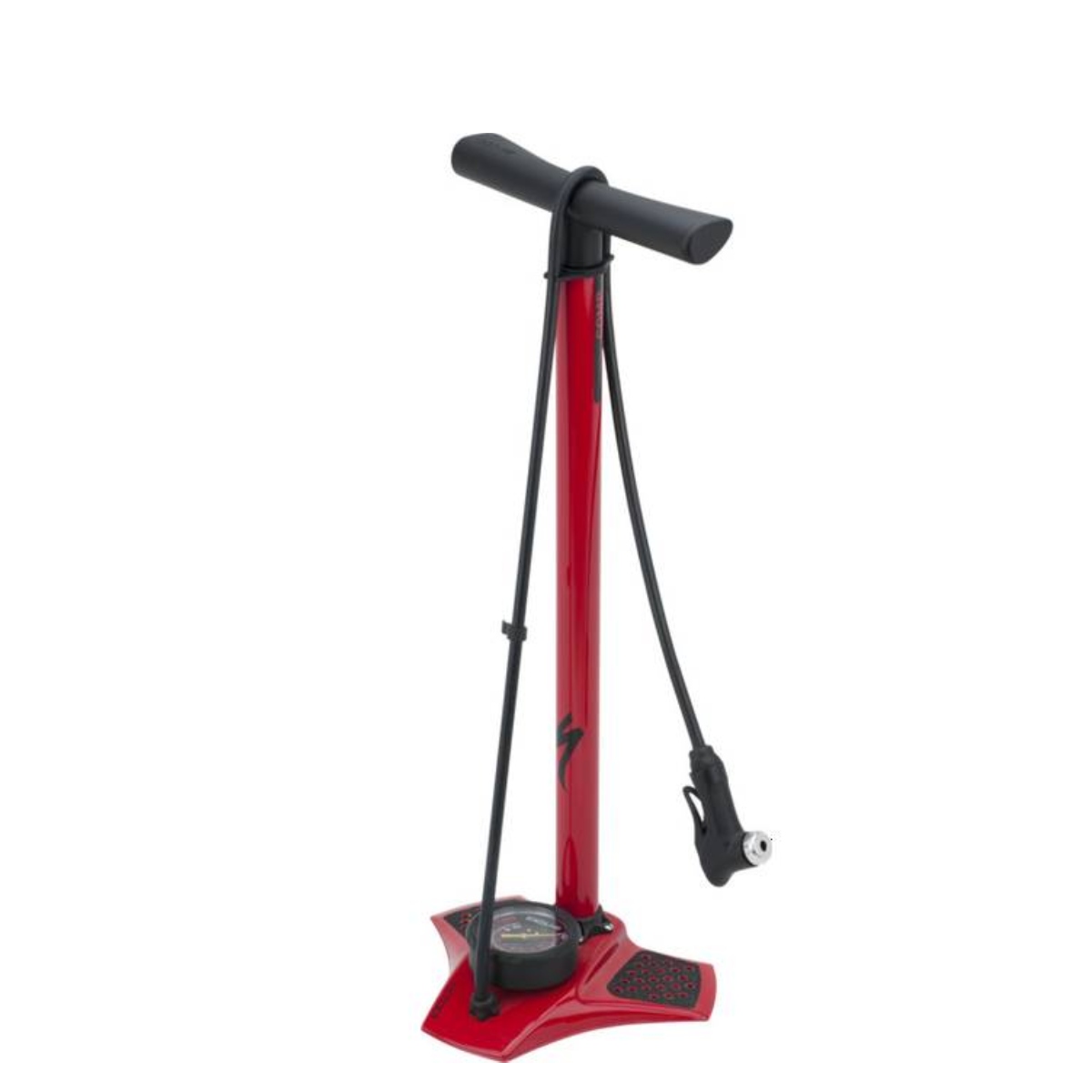
The SwitchHitter head auto-adapts to the valve type, and the dual-scale gauge makes it easy to lower the pressure in gravel tires.
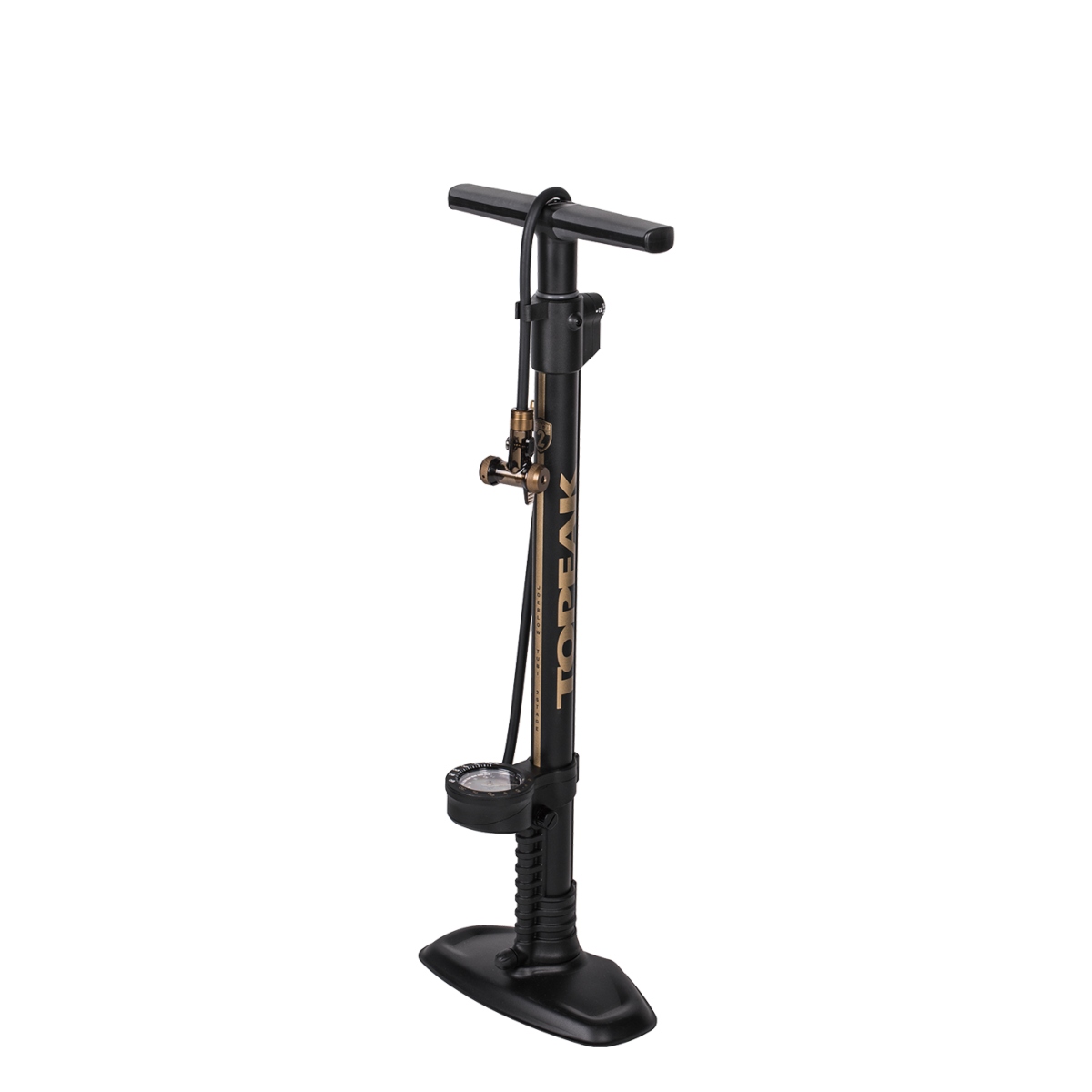
Packed with innovative features to genuinely make tubeless setups easier, the JoeBlow Tubi 2Stage is a good investment for those who have ditched the tubes.
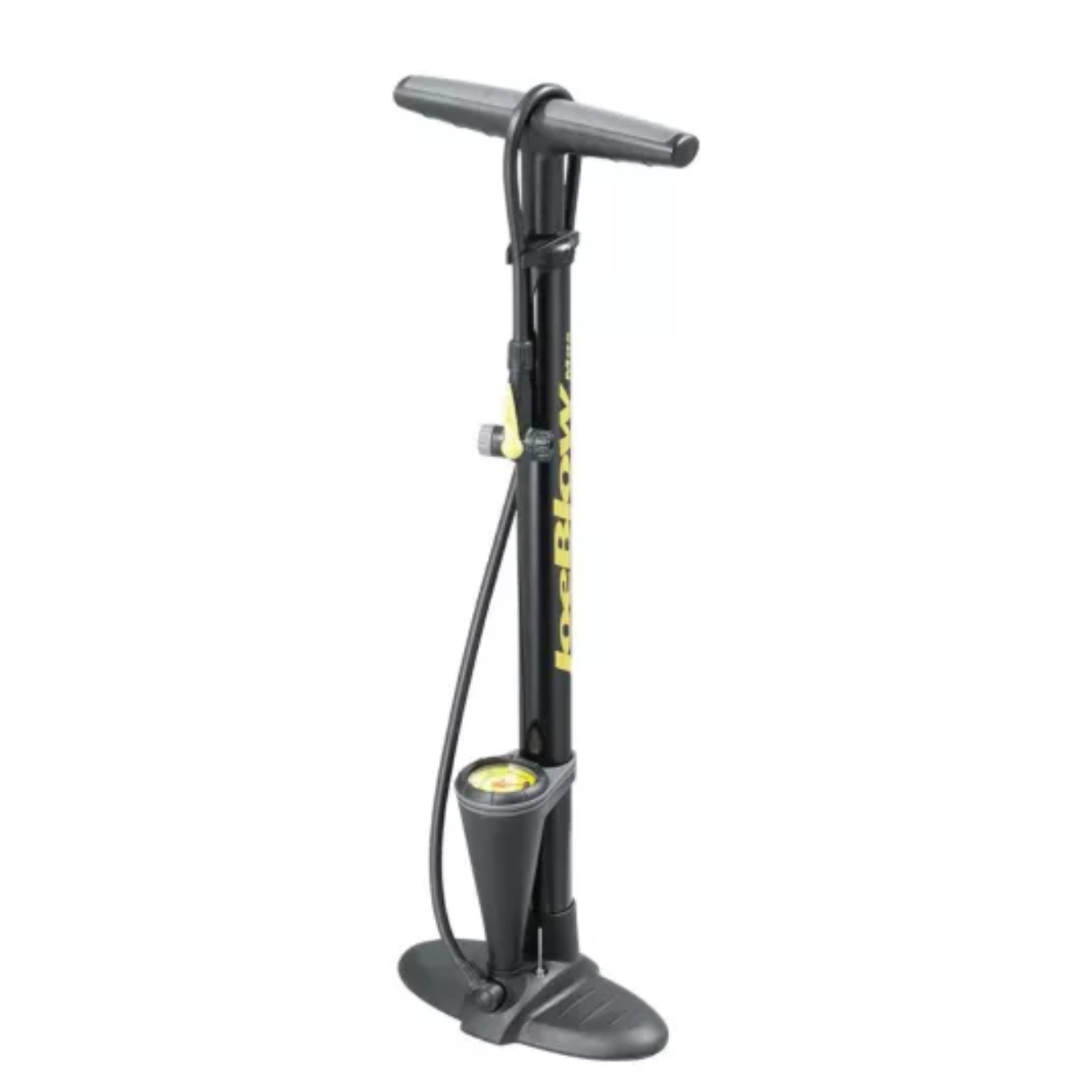
Efficient and stable, the Max track pump is a great wallet-friendly option from the Topeak JoeBlow range of bike pumps.
Best bike pumps: Mini pumps
Best Overall Mini Pump
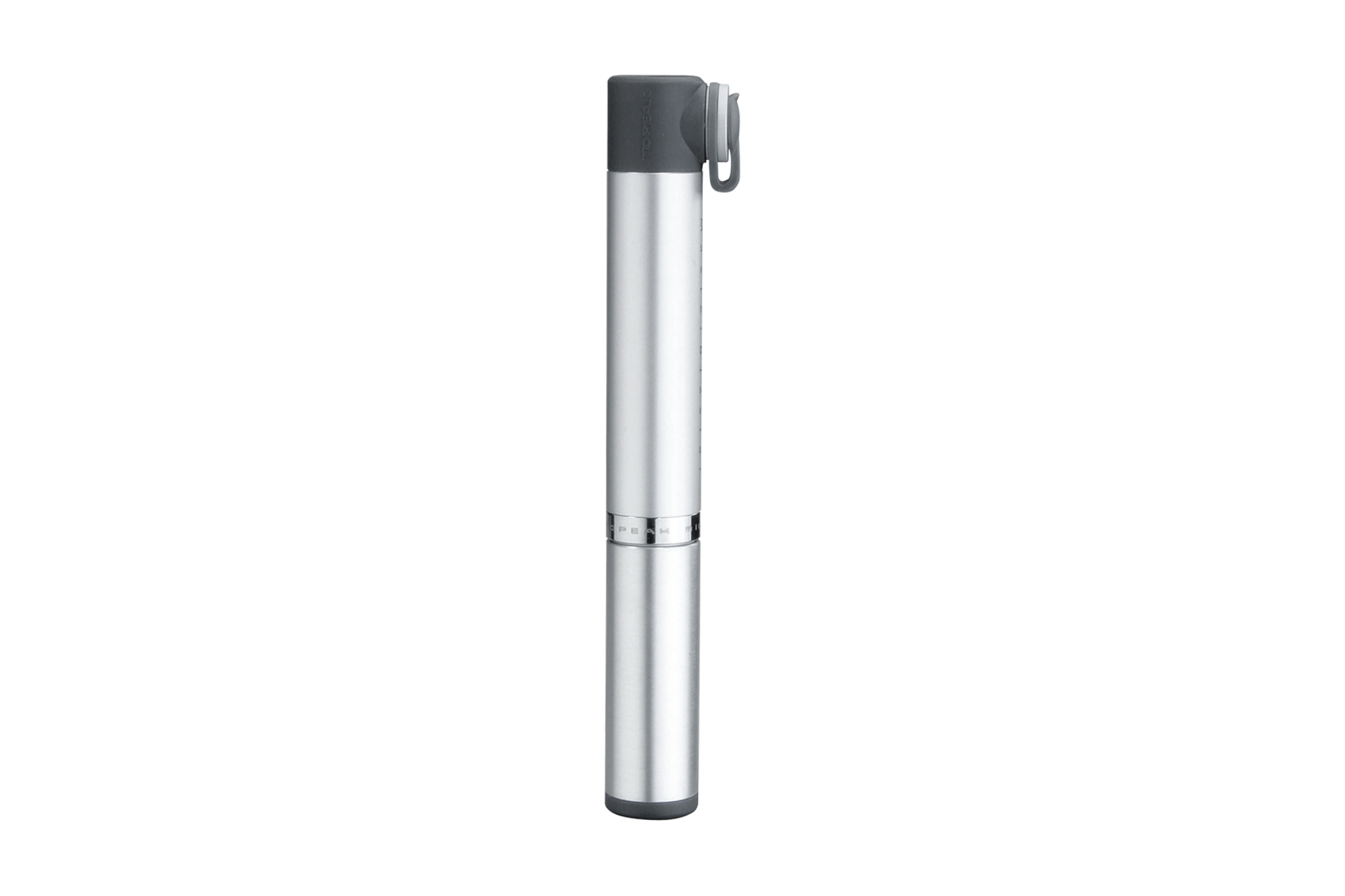
At just 65g Topeak's Microrocket AL is lightweight and easy to store
Specifications
Reasons to buy
Reasons to avoid
A lightweight aluminium construction, which weighs just under 65g/2.2oz and is a mere 160mm long. Connecting directly to the valve, this keeps things small and compact, which was ideal for keeping in my saddlebag, one of the few I have ever managed to fit. Its frame mount is also perfect, with two options available: either mounted next to a bottle cage or inline under a frame tube to keep it tucked away.
The claimed 160psi is undoubtedly ambitious, and I couldn't get it anywhere close to this. After several attempts and just over 200 strokes, I managed to get just above 60psi on a 23mm tyre, which is perfectly acceptable pressure to keep riding with or as a get-me-home.
Despite it being a little hard work, it is comfortable in the hand, and the action is smooth. For those who want to save even more weight, there is a fancy carbon version that saves 15g/0.5oz.
Read our full Topeak Microrocket AL bike pump review
Most Efficient
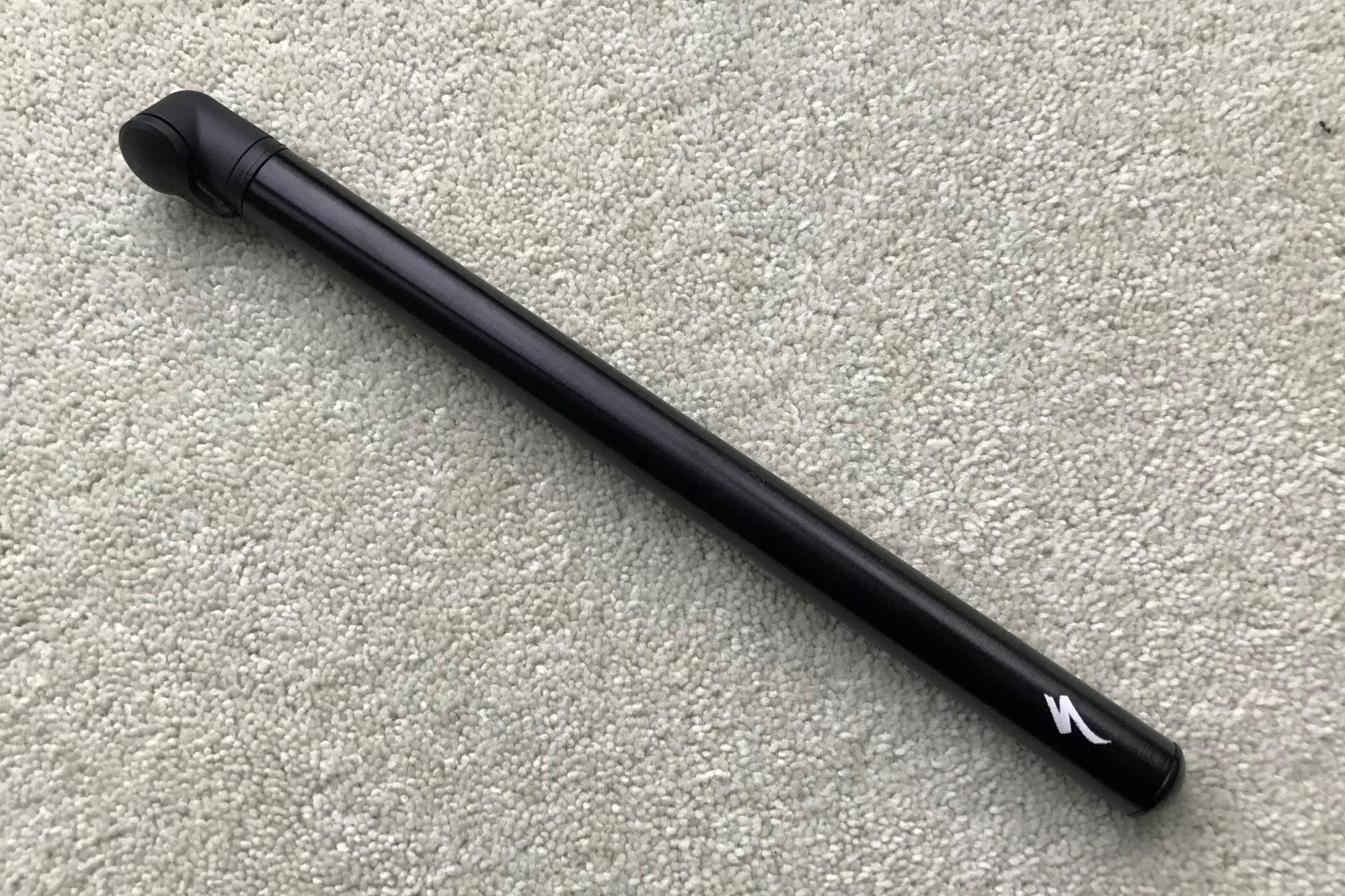
Specialized's Air Tool weighs under 100g and inflates tyres quickly
Specifications
Reasons to buy
Reasons to avoid
The Specialised Air Tool Road keeps things simple, with a single Presta valve fitment and is designed to maximise efficiency, delivering maximum air for each stroke of the pump.
This simplicity means that weight is kept to an absolute minimum; although not as low as the Topeak, it is still only 99g/3.5oz. Unfortunately, it is a little long for a jersey pocket, but at least it won't add weight to your bike, frame, or handlebar bag.
I found that the head fits really snugly over the valve, which is good as it minimises wobbling but also air loss when it does. What I would say is that the minimalist design makes it a bit more challenging to hold firmly, but once you've got your hands in position, it's quick and easy to get more than enough air back into your tyres.
Overall, it took me 120 pumps to achieve 65 psi in a 28mm tyre, which is more than enough to keep riding and plenty to get you home. Like the Topeak, the advertised pressure of 100 psi seems ambitious, but with fairly minimal effort, I got it to just under 80 psi, which is definitely not a ride-ending pressure.
Read our full Specialized Air Tool Road pump review
Best electric bike pump
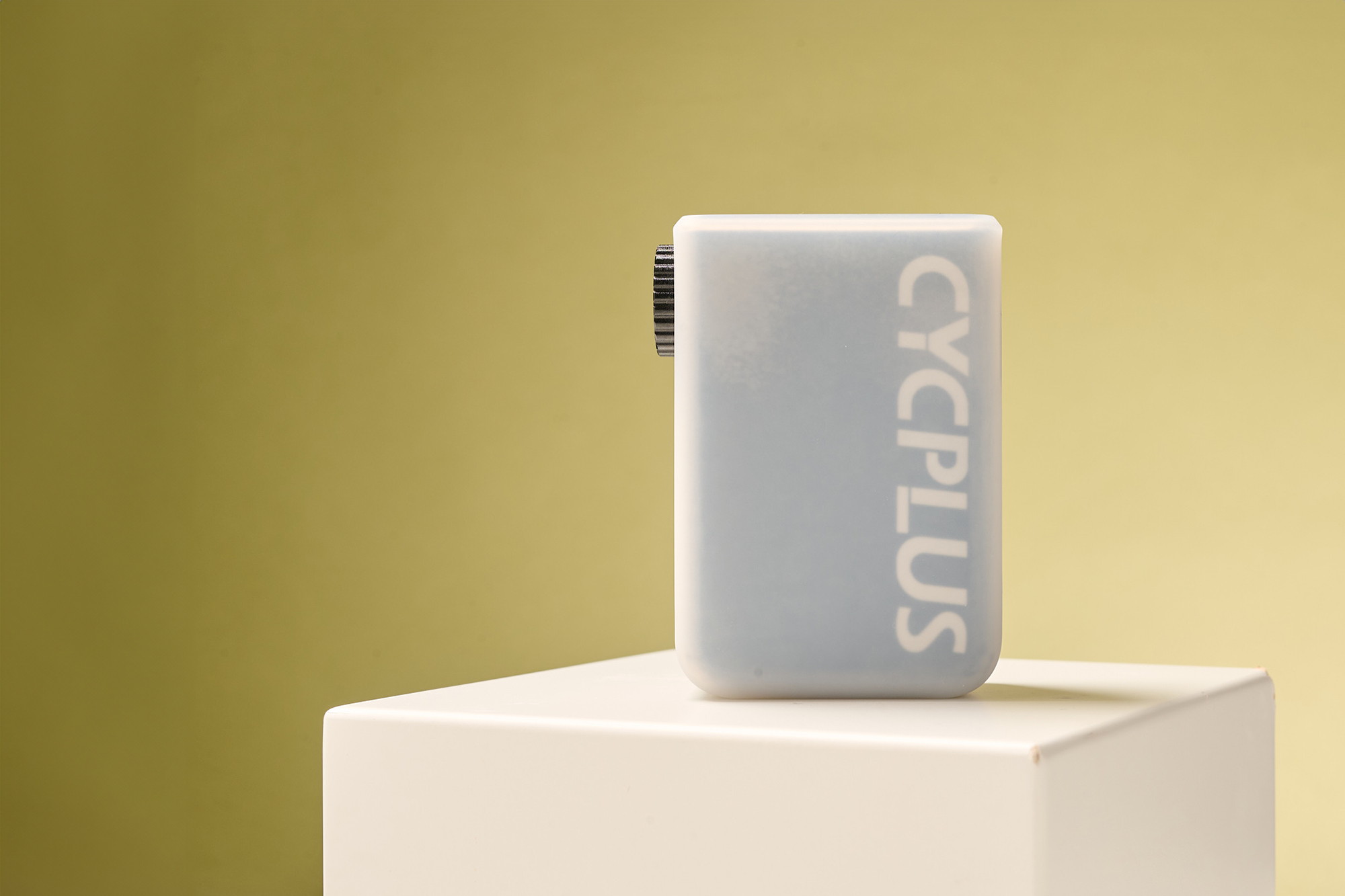
Cycplus Tiny E-Pump AS2
3. Cycplus AS2 Pro
Our expert review:
Specifications
Reasons to buy
Reasons to avoid
The AS2 Pro is one of three versions in the Cycplus range. At a distance, it is nearly impossible to tell them apart. The medium-sized Pro comes in at 120g/4.2oz, which pushes the limit of what you would want in your pocket, I think, but it is still compact enough to fit easily.
This slightly larger design enhances the Pro's performance over the 'Nano' version, allowing room for a digital gauge and a programmable pressure feature, which is particularly important for hookless rims and low-pressure levels.
It also features a large 420mAh battery, which increases the power output and inflated my 30c tyre to 50psi in just 37 seconds, making it the fastest model tested and managed this 4 times, second to the Topeak.
If I had to find one little annoyance, the screen's placement on the back can lead to a slightly awkward operation. However, overall, the AS2 Pro is a compact, capable unit that combines speed and intelligent features into an impressively priced package.
We have tested the AS2 Pro twice and found it to be excellent both times. Originally, North American Editor Rook put it to the test as part of early exploration of the category.
You can read the latest full review, which features in our best electric bike pumps guide, where our video editor Sam put 12 electric bike pumps head-to-head and crowned the AS2 Pro the best overall.
Best bike pumps: Floor pumps
Best overall floor pump
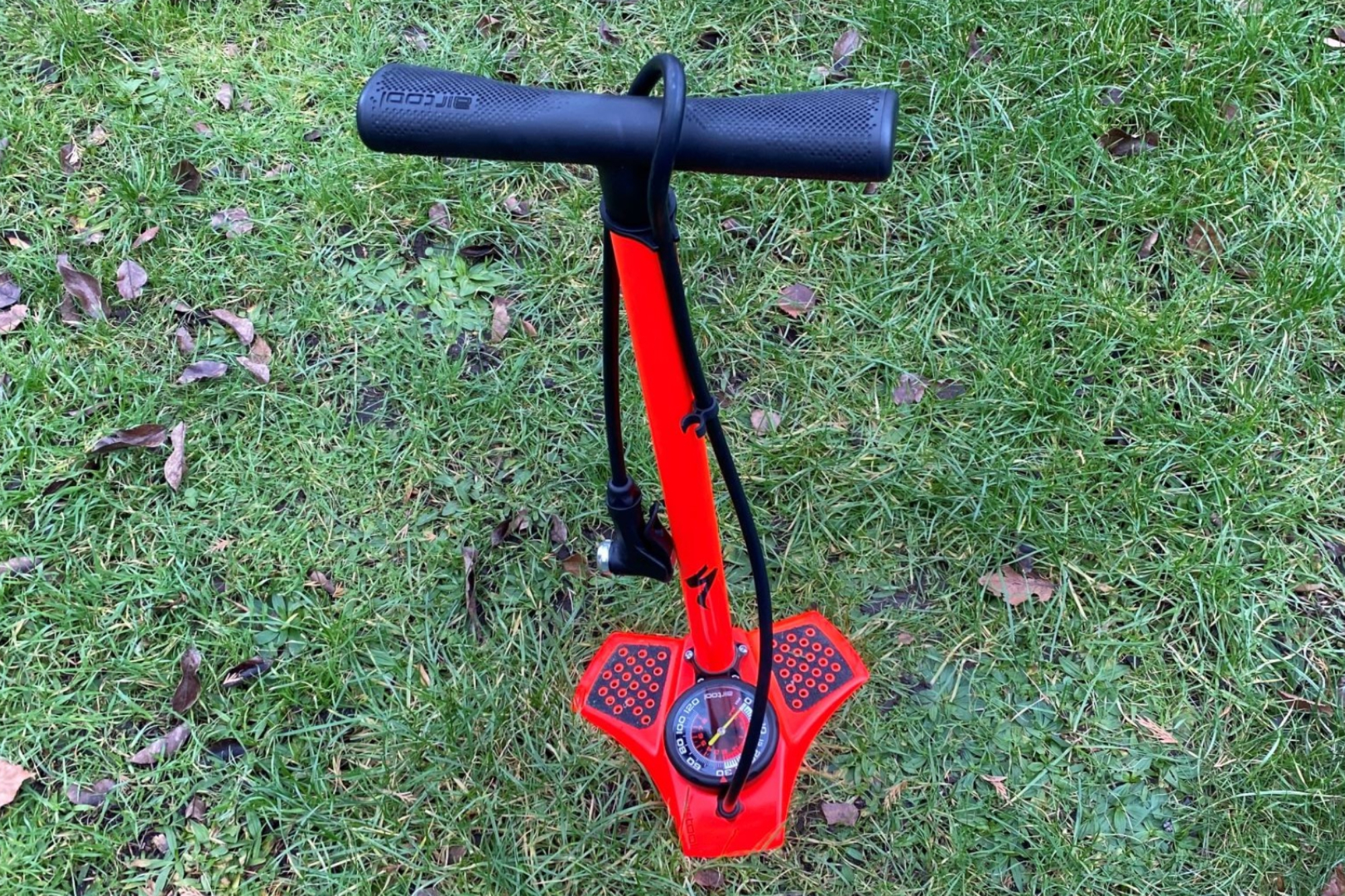
The Air Tool Comp's head automatically adapts to the valve type
Specifications
Reasons to buy
Reasons to avoid
Having a flat or changing tyres is one of the simpler but probably most frustrating jobs for the home mechanic. The range of different volumes and pressures of tyres, as well as more than one valve type, can all contribute to this.
The Specialized Air Tool Comp Floor Pump isn't going to inflate your tyres for you, but it does do a pretty good job of minimising the fuss regardless of your valve, tyre pressure and volume.
The SwitchHitter II head automatically adapts to Presta and Schrader valves, taking away any fiddling or even remembering which one is which. It means I can use it on the bikes in my house and the car, if needed.
There is just a lot to like about the Air Tool, from the oversized gauge and ego-style grips to the big skate deck grip and tapped foot stands. It is smooth and easy to use, easily achieving its advertised max pressure and never struggling even with old-school high-pressure road tyres.
Read more: Specialized Air Tool Comp Floor Pump full review
Best for tubeless setups
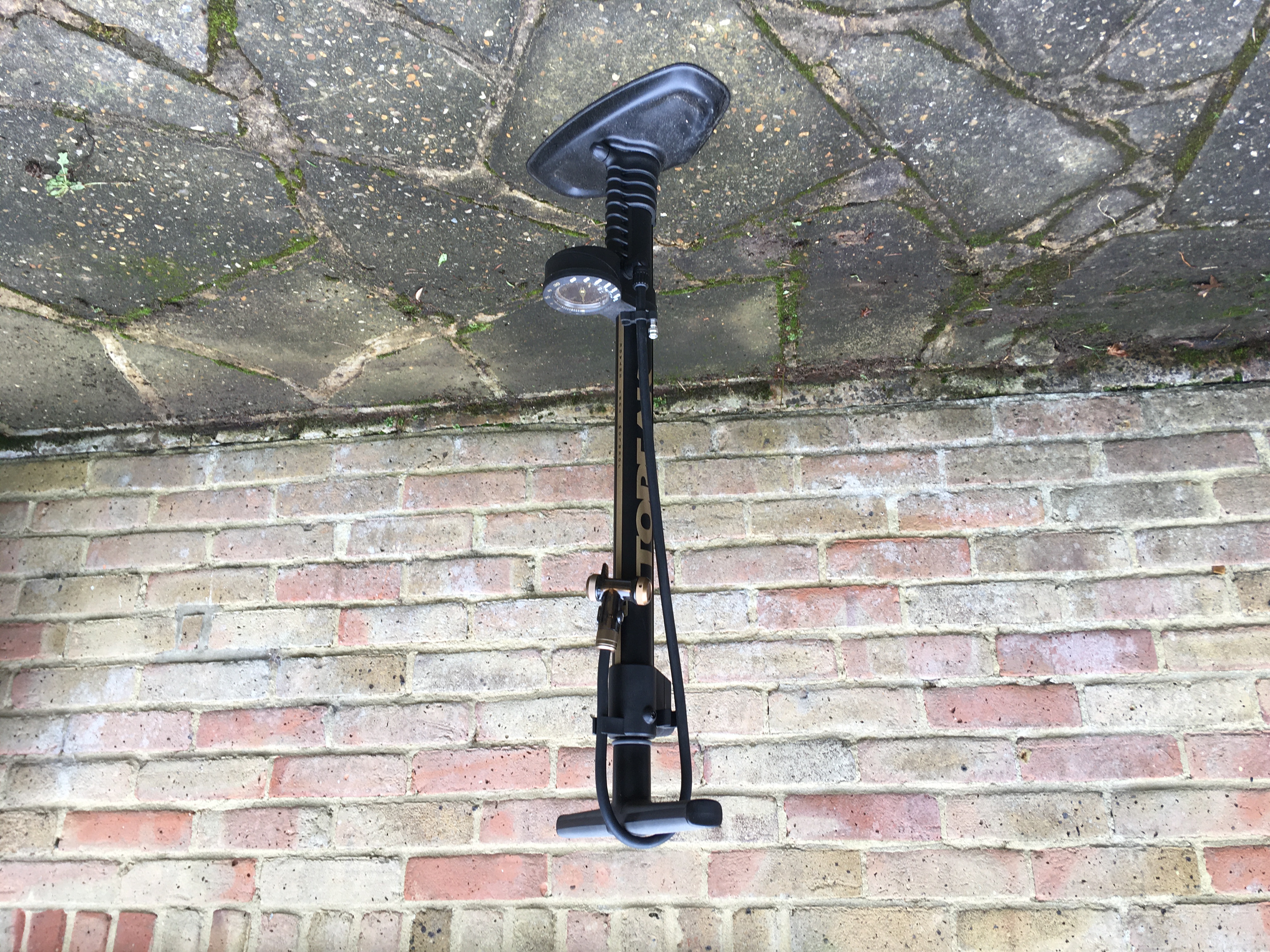
Specifications
Reasons to buy
Reasons to avoid
What can you say about the Topeak JoeBlow Tubi 2Stage floor pump? As usual, Topeak have made a very well-designed and robust tool, which, as always, excels in the workshop.
For a bicycle pump, the JowBlow Tubi is packed with innovative technology, but the true highlight for me was the chuck head, which can actually remove valve cores and holds them securely in place, eliminating the problem of losing tiny valves. This proved very useful when setting up stubborn tubeless tyres.
Anyone who has pumped furiously to get a tubeless tyre to seat will know how frustrating a wobbly pump can be - no such issues with the Topeak, which was stable and even allowed for easy one-handed operation. The pump's gauge is easy to read and, when compared to a digital gauge, was spot on.
However, due to the two-stage system, which is ideal for tubeless setups, it means that overall, it takes a few more strokes of the pump to achieve higher pressures. Which I can only see being an issue for those pumping up tubed tyres, and in which case you might not need the Tubi.
My only other slight annoyance is the 75cm hose length, which is a bit short for use in a workstand, but by no means a dealbreaker.
Read our full Topeak JoeBlow Tubi 2Stage bike pump review
Best budget
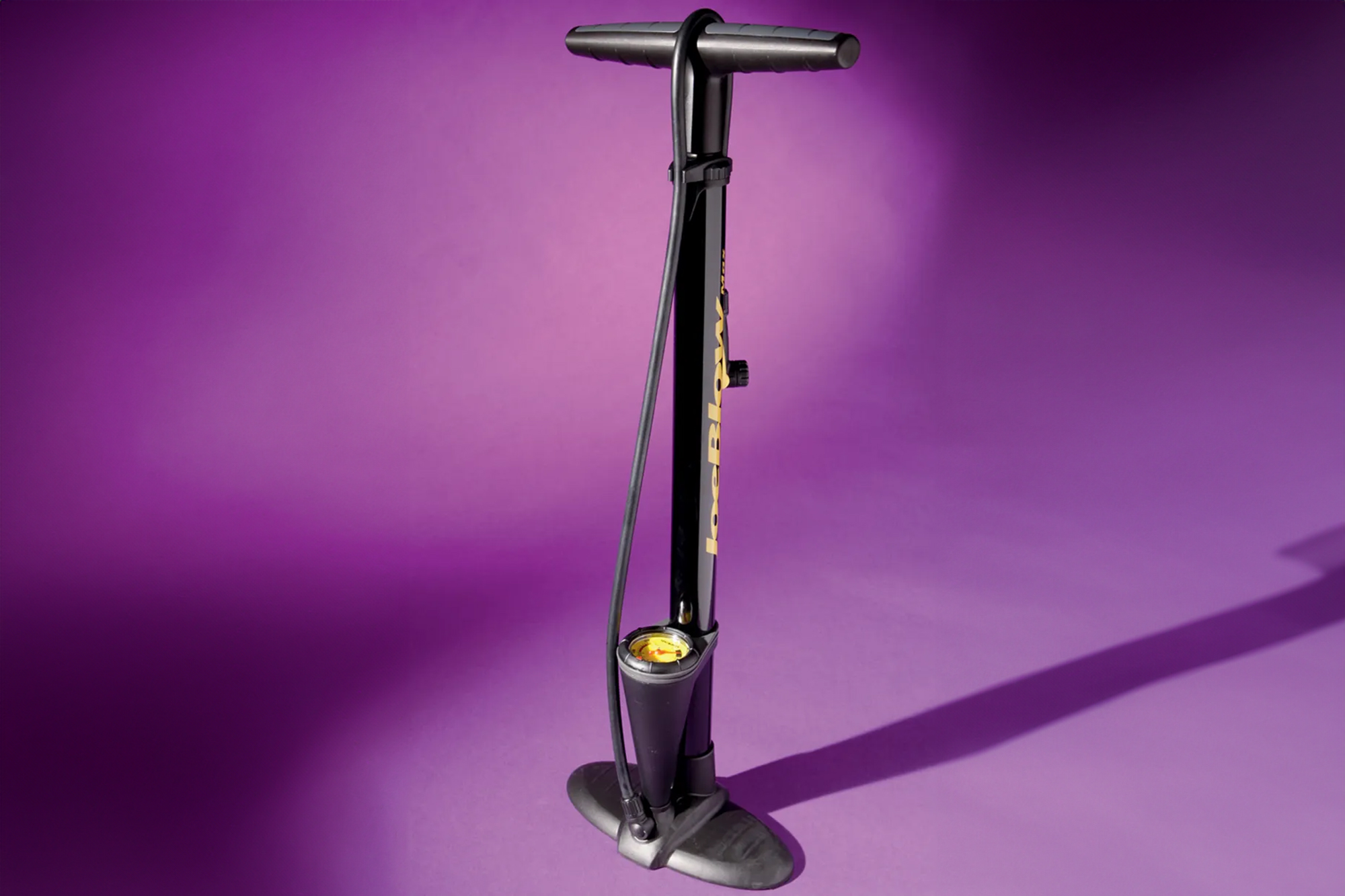
A wallet friendly price tag makes the JoeBlow Max II a reliable choice for cyclists on a budget
Specifications
Reasons to buy
Reasons to avoid
If you're looking for something a little less pricey than the dual-compatible pro-home Topeak Joeblow Booster floor pump, then this is the one. Finished with a steel barrel and a quality gauge, the JoeBlow Max II track pump is a great bike floor pump that meets all your basic needs, but limiting its extra functionality keeps the cost down.
On test, we found that it took just 19 strokes to get a 23mm tyre up to 100psi, which makes it a very efficient pump.
The pump comes with a plastic twin-sided head that works with both Presta and Schrader valves and has a lever to lock it onto the valve securely.
There are even replacement parts available should anything stop working, making it a good long-term choice too.
Read more: Topeak JoeBlow Max II bike pump full review
How we test
We have a dedicated team of testers here at Cycling Weekly, whose job is to review a whole range of cycling products and to write objective reviews of their experience of using them day in day out in a whole range of conditions.
With huge experience, they're really well placed to compare products, identify their strengths and weaknesses and bring you an honest, unbiased assessment of how they perform.
When it comes to the best bike pumps, testing is always conducted over an extended period. Why is this? One of the biggest factors that generally affect a pump's performance is durability. The high pressures combined with the friction created by the rubber seals mean we won't offer a verdict on a pump until we are sure it can stand the test of time.
Second to this is, of course, the efficiency of the pump, and for this, we have devised a simple test to determine how many strokes it takes to achieve a specified pressure. For road tubeless, this is now 50 psi, and for gravel, this is 30 psi.
We also considered a number of other factors, including the chuck design, ease of use, weight, stability, and how easy they are to carry on a ride.
For more information about our testers and how the team here at Cycling Weekly tests products, visit our How We Test page.
How to choose the best bike pump
Mini pumps or floor pump?
Fundamentally, there are four different ways to inflate your bike tyres. We have lots of detailed information below, but as a quick summary:
Mini pump - The best portable bike pump will balance the ability to inflate your rubber and being small enough to carry in your rear pocket or stow on the frame. Your riding priorities will help you focus your decision here, as, like all bike pumps, each one will lean towards a specific talent, eg micro size and weight, but not great at achieving much more than getting you home tyre pressure, or great PSI capabilities but heavier and frame mounted.
Floor pump (aka track pump) - In the main, this is a stay-at-home pump and the best way to achieve higher pressures, especially when going from totally flat. Most will include a pressure gauge so you can make sure your tyres are properly inflated before heading out for your ride. Some floor pumps include an 'air chamber' which can be pumped to high pressures in order to seat tubeless tyres. You may see them called reservoir pumps.
CO2 Inflator - Technically, this isn't a pump as it contains compressed gas, which can reach up to 120psi in seconds. There are pros and cons to this system, more of which is explained in detail on our page dedicated to the best CO2 inflators.
Electric Pumps - these little pocket rockets are taking over, and for many, replacing both mini pumps and CO2 inflators. I have even heard of some riders ditching their floor pumps too, but I think we might be getting ahead of ourselves there. There isn't much more to say, really; they are just a very compact version of your car tyre, an air mattress or a paddleboard pump. Which, providing you keep it charged, is as simple as turning it on, placing it on the valve and letting it do the heavy lifting.
What is a mini/hand pump?
A mini pump is a small, portable pump designed to be carried with you on your rides. Sizes do vary - some are small enough to fit in a pocket or saddle bag, whilst others might need to be frame-mounted. This portability comes at a cost, though, and they are not the most efficient way to inflate a tyre, so they are primarily for emergency use if you suffer a puncture away from home. A good mini pump should be able to inflate a road tyre to 50 or 60 psi (enough to get you home) without too much trauma, but be prepared to be pumping for a while, as their diminutive size means that not much air is being moved with each stroke. Typically, a mini pump will take several hundred strokes to reach a reasonable pressure.
Some mini pumps attach directly to the valve, whilst others include a hose to make life a bit easier, and most will work with both Presta and Schrader valves by swapping the head about. Integrated pressure gauges are definitely not an essential element of a mini pump, although some do include them, so don’t worry if a pump doesn’t have one.
How to choose the best mini bike pump?
Size, weight and efficiency are the three main elements to consider, along with your particular use case.
Racers and riders who don't venture too far from home will probably opt for the smallest pump available as they don't expect to have to use it much. Bikepackers and long-distance tourers, on the other hand, might prefer to sacrifice some compactness for greater efficiency and ease of use as it's more likely that the pump will see some action and less likely that there will be a convenient bike shop or taxi around if the worst happens.
What is a floor/track pump?
You don’t have to inflate many tyres with a mini pump before you realise that a track pump is a necessity, not a luxury. With far larger chambers two-handed handles and a stable base, a track pump will inflate a tyre in a fraction of the time that a mini pump takes. Furthermore, as you can use your bodyweight to lean on the pump, each stroke is far easier and more efficient too.
Usually, a track pump will have a long hose with a double-ended head that works with Schrader and Presta valves without the need to swap any fiddly parts and a sturdy foot plate to stand on for better stability. It will probably have a pressure gauge, so riders who like to fine-tune their set-up to the conditions(CX racers for example) have a better idea of how much air is in the tyre. The accuracy of these integrated gauges can be a bit questionable though on some pumps, so a separate digital pressure gauge is better if it really matters.
More recently, as tubeless tyres have become popular, some track pumps also include a separate, second chamber that can be pressurised and used to pop the tyre onto the rim initially.
What is the best bike floor pump?
Most track pumps will do the job adequately, but there are certain features that might appeal to you more than others.
Make sure that you get the right style of pump - large bore pumps are better at inflating bigger gravel and MTB tyres whilst pumps with a narrower bore are easier to use on high-pressure road tyres. If you use tubeless tyres then you might want to look at the type of pump that includes a second chamber that is designed to open the tyre onto the rim easily whilst if exact tyre pressure is important to you then an accurate, easy-to-read gauge is essential.
Frequently asked questions about bike pumps
Do I need a mini bike pump if I have CO2 cartridges?
It is sound advice to always carry a mini pump with you, even if you also carry and use CO2 cartridges. Most experienced cyclists have experienced the frustration of a double puncture, induced by a nasty pothole or freshly cut hedge, and a CO2 cartridge can only pump up one tyre. It can also be very easy to not attach your inflator correctly to the valve, and lose all the CO2 without getting any in your tyre.
If you are striving for a KOM or personal record and are sure that back-up is available, then by all means ride with just CO2, but when some of the pumps on test weigh a scant 65g we would suggest that it is always worth sticking one in your pocket.
It is also less wasteful and cheaper to use a pump in the long run. However, the trend really is to replace both with one of the best electric bike pumps. They offer greater sustainability, high reliability, and are just as compact and easy to carry.
How should I carry my mini pump?
Most mini pumps come with clips to attach the pump to the frame, or, if it is small enough then the pump can go in a pocket, saddlebag or tool tub.
Carrying it in a pocket is the simplest solution, but it takes up space, might get forgotten and can get wet/dirty, particularly off-road. Similarly, if you use the bottle cage mounts, the pump will be exposed to all the spray and mud from the road or trail which might cause damage in the long term, but as it is on the bike it won't get left at home and is easy to get to. If you do use on-frame mounts, then it's worth ensuring that the pump's head is turned away from the direction any muck is likely to come from so it stays clean.
This leaves my personal preference, which is to keep the pump in a saddle bag or tool tub - out of harm's way but accessible and always with the bike. This option does require a pump that is small enough or a bag that is big enough to make this work.
Do I need a gauge on my pump?
Having a gauge is definitely helpful for setting up tubeless tyres and optimising performance; however, it's not always available. With hand pumps, for example, it's not always an option; in fact, to make them more compact, it's far more common not to have one. Floor pumps should have a gauge.
Having a gauge has become more of a necessity than ever, with the widespread adoption of Hookless rims. It is hugely important not to exceed the maximum tyre pressure, which for many is 70psi. If you run hookless or even a standard hooked rim with a tubeless setup, there are tyre pressure considerations. If your pump doesn't have a gauge, I would recommend grabbing a pressure gauge, like the Topeak D2 Smart Gauge.
The latest race content, interviews, features, reviews and expert buying guides, direct to your inbox!
Hannah is Cycling Weekly’s longest-serving tech writer, having started with the magazine back in 2011. She has covered all things technical for both print and digital over multiple seasons representing CW at spring Classics, and Grand Tours and all races in between.
Hannah was a successful road and track racer herself, competing in UCI races all over Europe as well as in China, Pakistan and New Zealand.
For fun, she's ridden LEJOG unaided, a lap of Majorca in a day, won a 24-hour mountain bike race and tackled famous mountain passes in the French Alps, Pyrenees, Dolomites and Himalayas.
She lives just outside the Peak District National Park near Manchester UK with her partner, daughter and a small but beautifully formed bike collection.
